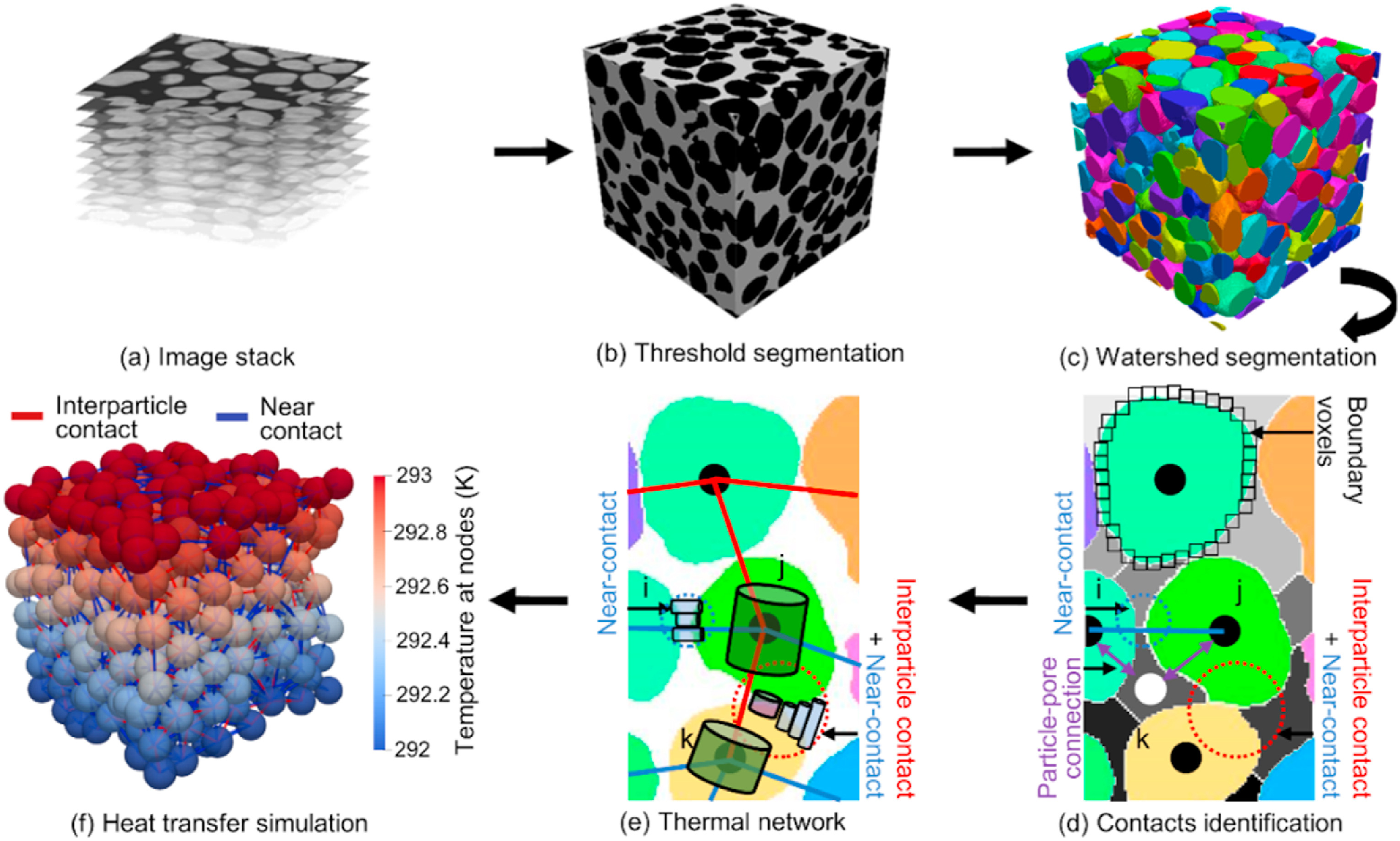JRMGE / Vol 14 / Issue 1
Estimation of thermal conductivity of cemented sands using thermal network models
Wenbin Fei, Guillermo A. Narsilio
Show More
Department of Infrastructure Engineering, The University of Melbourne, Parkville, Australia
2022, 14(1): 210-218. doi:10.1016/j.jrmge.2021.08.008
Received: 2021-03-29 / Revised: 2021-06-17 / Accepted: 2021-08-20 / Available online: 2021-11-01
2022, 14(1): 210-218.
doi:10.1016/j.jrmge.2021.08.008
Received: 2021-03-29
Revised: 2021-06-17
Accepted: 2021-08-20
Available online: 2021-11-01
Effective thermal conductivity of soils can be enhanced to achieve higher efficiencies in the operation of shallow geothermal systems. Soil cementation is a ground improvement technique that can increase the interparticle contact area, leading to a high effective thermal conductivity. However, cementation may occur at different locations in the soil matrix, i.e. interparticle contacts, evenly or unevenly around particles, in the pore space or a combination of these. The topology of cementation at the particle scale and its influence on soil response have not been studied in detail to date. Additionally, soils are made of particles with different shapes, but the impact of particle shape on the cementation and the resulting change of effective thermal conductivity require further research. In this work, three kinds of sands with different particle shapes were selected and cementation was formed either evenly around the particles, or along the direction parallel or perpendicular to that of heat transfer. The effective thermal conductivity of each sample was computed using a thermal conductance network model. Results show that dry sand with more irregular particle shape and cemented along the heat transfer direction will lead to a more efficient thermal enhancement of the soil, i.e. a comparatively higher soil effective thermal conductivity.
Keywords: Network, Cementation, Computed tomography, Ground improvement, Sands
Article Data
Author(s) Information
Dr. Wenbin Fei
wenbinfei@outlook.com

Dr. Wenbin Fei is a Research Fellow at the Department of Infrastructure Engineering, The University of Melbourne, Australia. He received his PhD degree from the same University in 2020. Wenbin explores the multi-scale thermal–hydraulic–mechanical–chemical (THMC) processes in geomaterials with contributions to geothermal engineering, energy structure, and energy waste management (carbon geological storage and recycled materials in concrete and permeable pavement). At particle and pore level, he developed a platform combining computed tomography (CT) technique, advanced image processing algorithm, discrete element method (DEM), complex network theory (i.e. graph theory), finite element method (FEM), network model and machine learning, with the aim to characterise the microstructure of geomaterials and predict thermal conductivity and permeability automatically, efficiently and without artificial bias. At the field scale, he used COMOSOL Multiphysics and also developed a software AEEA-Coupler which combines different commercial software (ABAQUS and ECLIPSE) to simulate the THMC problems in real-size projects. Further information at wenbinfei.github.io.

